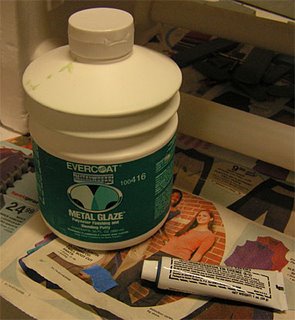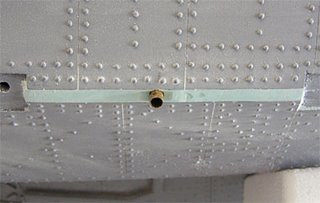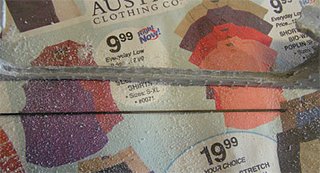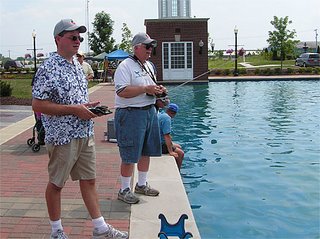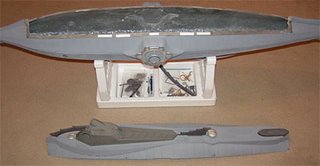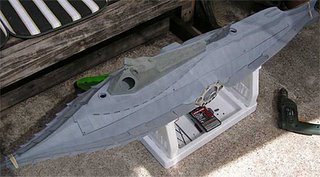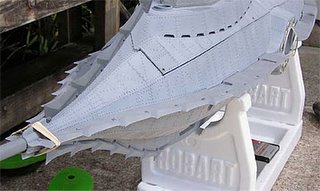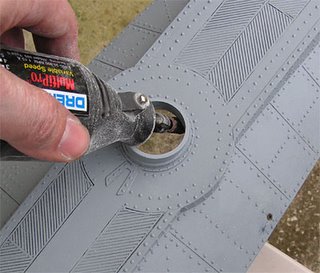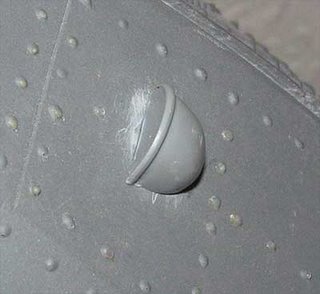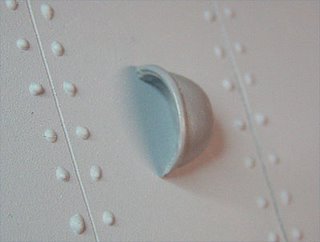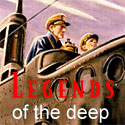Although it isn't Nautilus related, I did get a chance to work on one of my subs lately. Hopefully the techniques described will help someone on their next project. The boat in question, a 1/96 ThorDesign improved Los Angeles class boat, was my first successful r/c sub project. Every year I do a little bit more to it. Last year it was dry transfers prior to our annual SubRon5 gathering in Georgetown. This year several of us plan to make the trip to Carmel, Indiana for SubRegatta 2006. As a result I got a little more ambitious in my upgrades: running lights, weathering, etc.
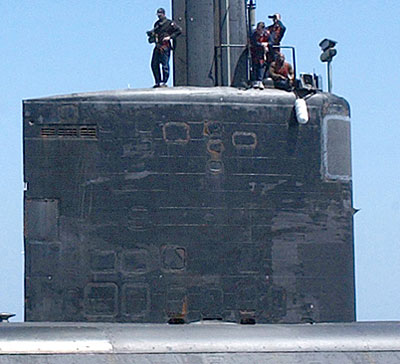
While prepping for the anticipated work, I studied countless pictures of Los Angeles class boats. One feature that couldn't be avoided in 1:1 scale was their anechoic tiling. This hull tratment consists of rubber tiles glued to the hull, usually in a brick pattern, and gives the sail and hull a rough, spongy look. Several threads on sub modleing boards have discussed different methods of how to duplicate the look. I've been told by others it can't be done effectively in a scale as small as 1/96. Nevertheless, I decided to stretch my modeling skills and see if I couldn't apply this distinctive look to my boat.
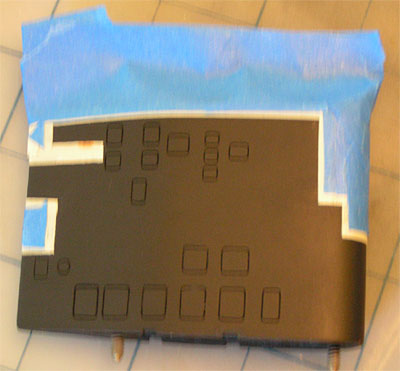
The sail became my test project. It is small and if my plans didn't work out, I could easily touch it back up to the way it was before. By studying real LA sails I noticed that the tiles aren't a uniform covering over the entire sail but rather are cut out around different parts such as diesel exhausts, sonar windows and trailing antenna flushing tubes. By paying attention to several photos (downloaded from the
NavSource Online submarine photo index) I carefully masked off my sail to cover all areas that would not receive the tiling. As no two boats have the exact same patterm of tiles I felt no pressure to get it "perfect" (sorry about the burred image).
I then applied approximately 5 coats of flat black to the masked areas. I allowed them to surface dry quickly in direct sunlight between coats. Attention was paid to make sure paint was built up along the masked edges. This was where the thickness of the tiles would be visible.
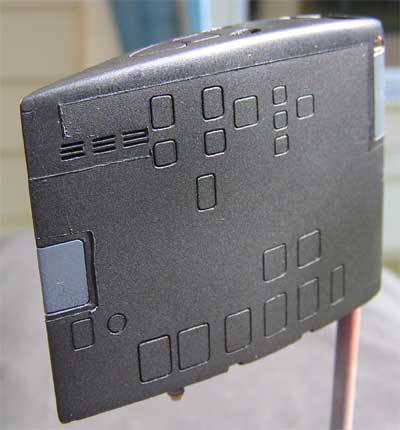
With the tape removed, the thicker layers of paint created a slight relief defining the tiled area. The edge was knocked down with a light wet sanding of 2000 grit. At this point I was pretty pleased with the results. Special note goes to Steve Neill and Kevin McCleod -- I learned this trick by reading their prospective scratchbuilding threads.
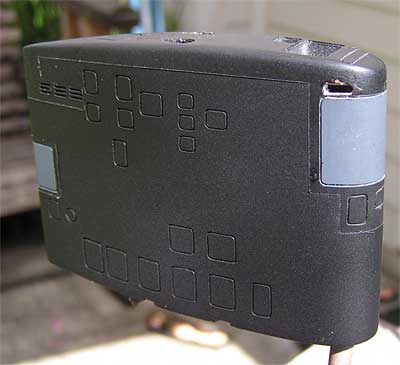
I was pretty thrilled by the initial results. The extra layer was visible without looking out of scale. But I was only half way there. I had to simulate the tiles themselves. Having considered recommended paint masks, etc. I decided to give the old tried and true method, scribing, a try to see if the effect would produce the results I was looking for.
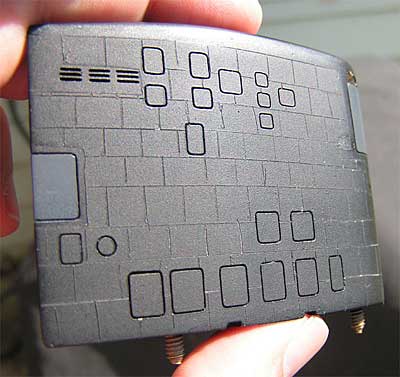
Using a plastic straight edge and scriber, I first laid down the horizontal lines on each side of the sail. Each line was made with a single light pass of the scriber. Care was taken to start a slight bit in from the paint edge. My goal was to suggest the tiles rather than define them like the access hatches and sonar window edges. With both sides done I carefully worked the lines around the curved leading edge of the sail.
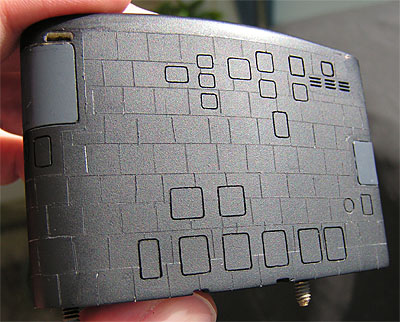
The vertical lines were scribed individually in a staggered brick pattern to follow the originals. Spacing was generally kept uniform but since the tiles are custom cut in many places to fit the real boats, I again felt free to improvise. A little paint weathering will tend to hide mistakes and further soften the scribed lines.
Overall, I am extremely pleased with the look. From a distance, one has to catch the model with the right light and angle to see the detail -- just like the real boats. But up close it is easy to see and gives it a unique texture. With my courage up I've decided to apply the same techniques to the hull next using a jig and surface marking tool to hold the scriber. I'll post the results when I'm done.



